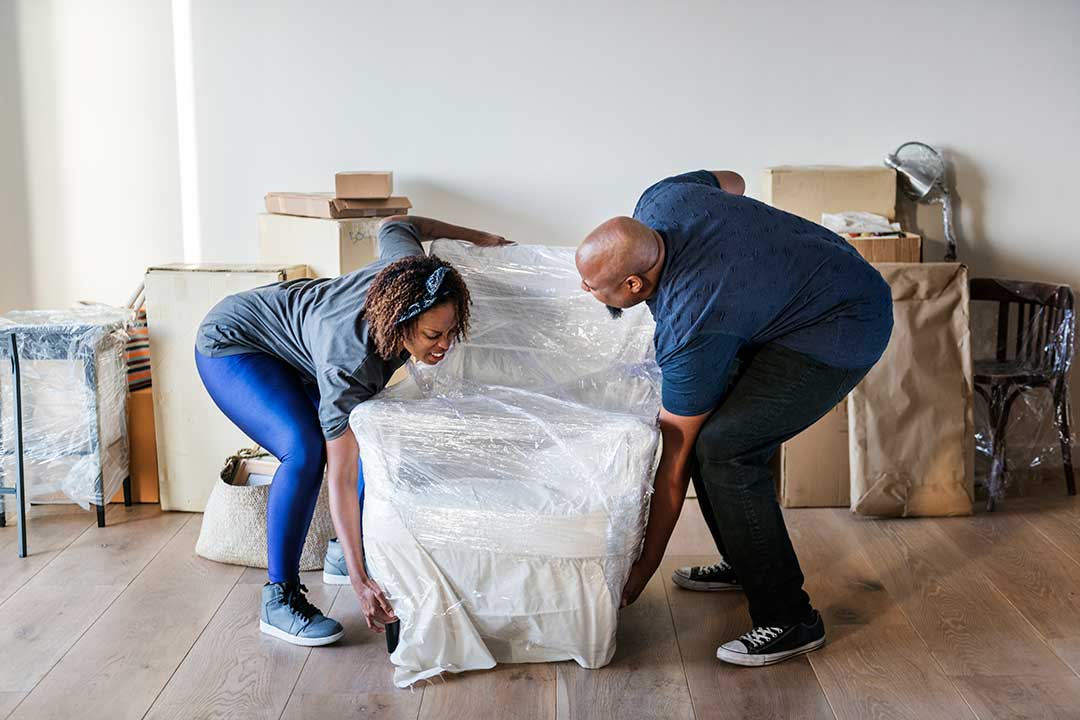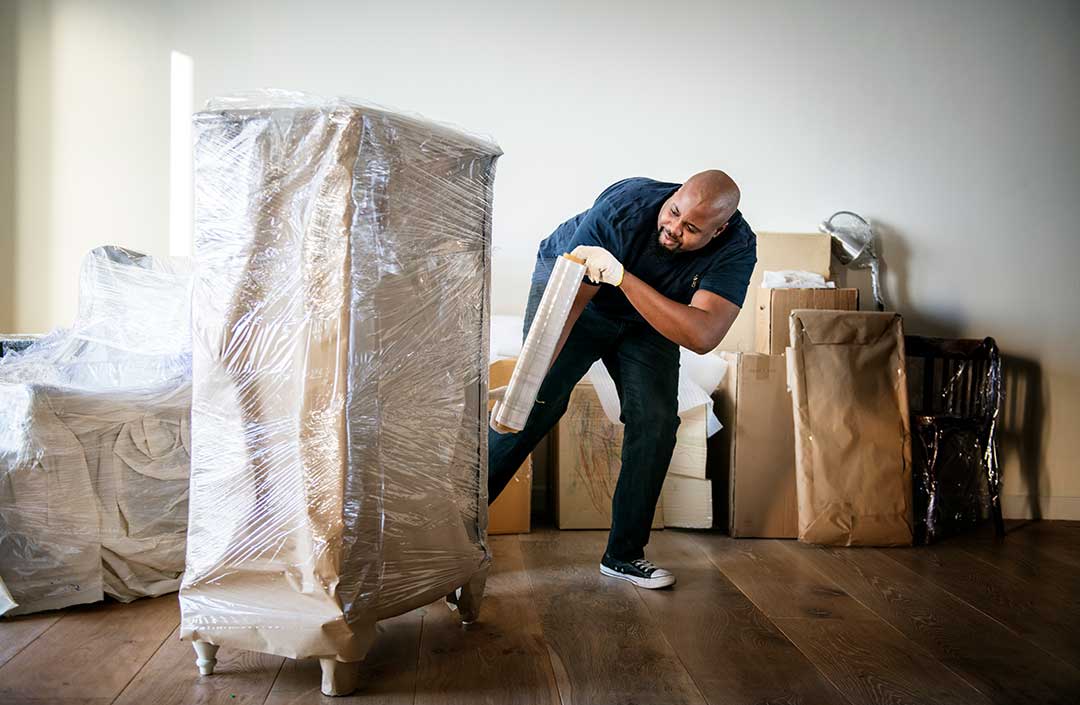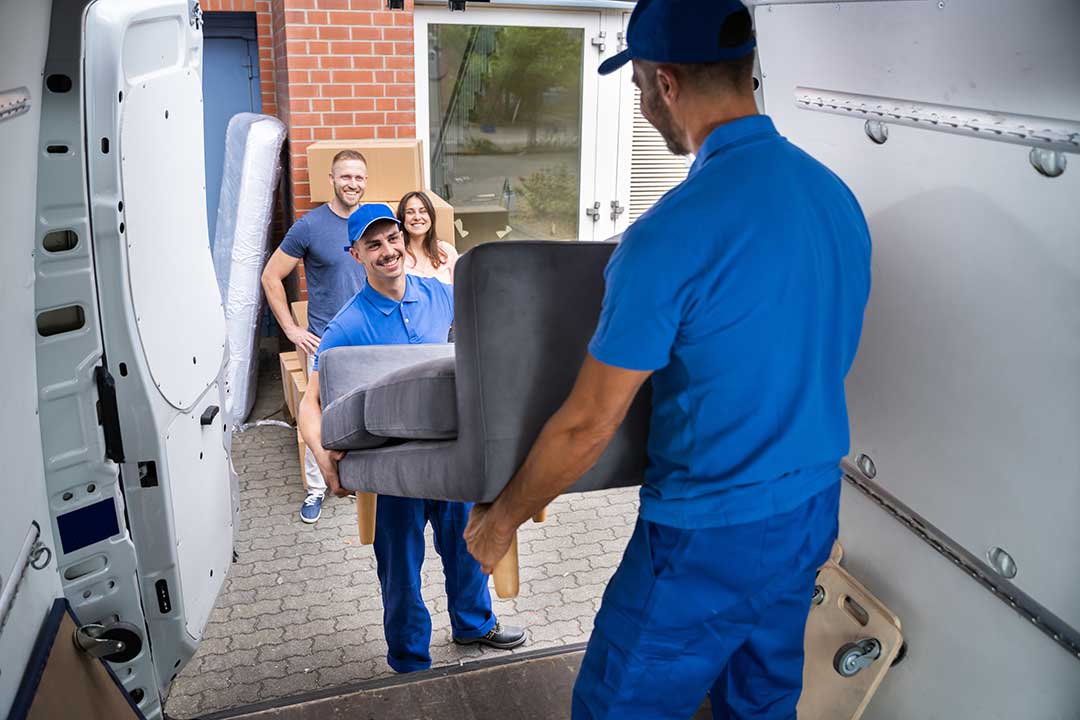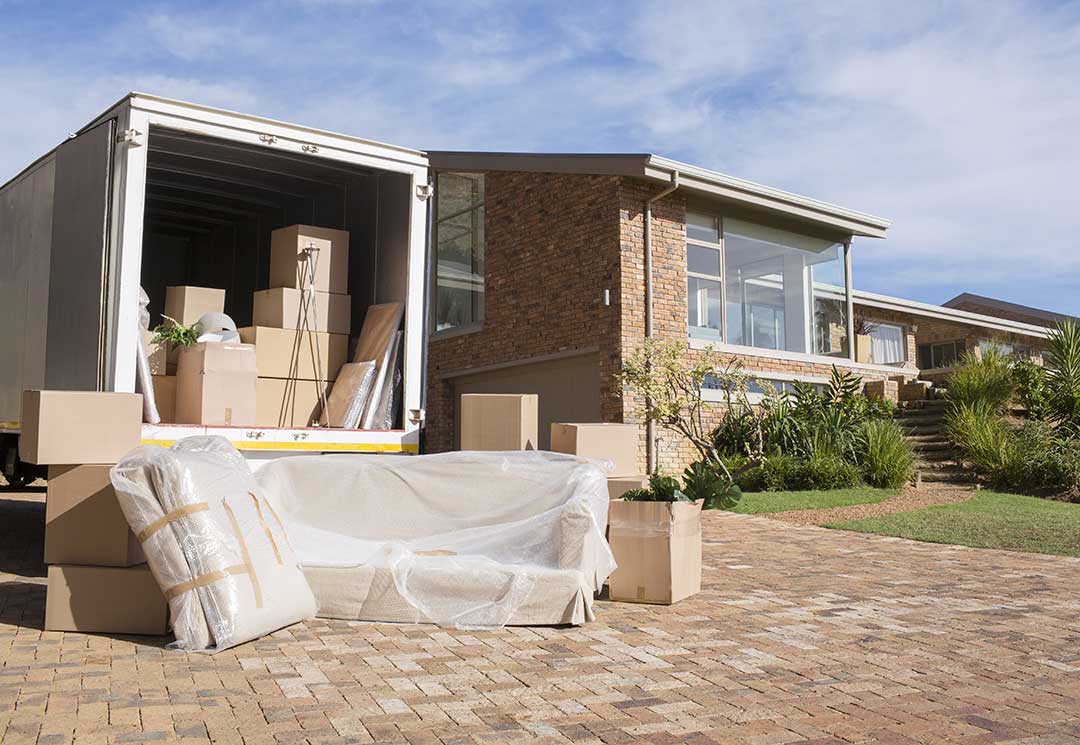10-Step Guide to Furniture Collection

There may be many reasons why you would enlist the help of a furniture collection company. You may have sold items on eBay and require assistance in ensuring they make it to the buyer’s location, you may be moving house and need help getting any large items of furniture to the new property in one piece, or you may even have a piece that is past its best and not worth the cost of repair, in which case you require help from a company that offers an old furniture collection service to ensure that it is disposed of correctly.
Whatever the details, you will need to see to it that the process of getting one or more items of furniture collected, transported and delivered at the desired location is planned and executed correctly.
We’ve put together a ten-step guide that will take you through each part of the process to help ensure that your furniture collection is successful

1. Measure furniture dimensions
The furniture collection company you hire should be provided with as much relevant information as possible for their job so that they can plan its moving and transportation while making appropriate allowances for its size and weight. Providing as many supporting measurements as possible will be very useful to them. They will then know exactly what they will be expected to move and should be able to give you a very accurate quote.
Your first step would be to measure all the dimensions of your piece of furniture. Measure height, width and depth with a retractable tape-measure (a three-metre one should be enough for most items of furniture, although five-metre tape measures are also available), and make a note of these. If your item is not a standard shape, make a note of any other measurements that you think would be helpful in terms of moving the piece. There may be sharp angles or rounded edges that require their own measurements, so take down as much information as you can.
It's quite likely that the furniture collection company will also request photographs of the item or items as a point of visual reference. Taking photos that show condition before the move can also incidentally safeguard you against disputes in the unlikely event that you need to claim for accidental damages caused by careless handling or bumps during the moving process.

2. Estimate weight of furniture
As well as measuring the dimensions of your item or items of furniture in order to provide these details to the furniture collection company, it’s likely you will also need to provide a
weight or estimated weight of your item. Depending on what kind of item you are requiring to be collected, you may possibly have the facility to weigh it yourself if it is a small but heavy item. However, for most larger items that cannot fit on a standard home weighing scale, such sofas, armchairs, wardrobes, cabinets, chests of drawers, desks and tables, you will have to provide an estimated weight.
If the item is modern and you bought it from new, check your original paperwork from when you purchased the item for its specifications, which would normally include the weight. Alternatively, visit the retailer’s and manufacturer’s websites to see if this information is available there. If the item is no longer produced and there are no records of its specifications retained at these sites, you can search for it by product name on a search engine just in case there is another website where original documentation about the item has been retained.
If you have tried all these options and are still unable to find the weight corresponding to your item of furniture, or the item is an antique or second-hand and lacks any visible product name, try to look on the Internet for items that are similar in size, style and materials (e.g. fibreboard with wood veneer, solid oak, or solid pine), and adjust the weights given for them to form an estimate of that of your own piece, bearing in mind any differences in dimensions.

3. Check feasibility of moving without disassembly
Once you have collected together all the relevant specifications of your item of furniture, your next step is to assess its exit route from your property. Think about how you got it into the property in the first place. Did it come flat-packed or in parts? If it will not fit through a doorway or you can’t move it around the corners on your staircase, is it possible to disassemble it to these parts again ready for transportation?
If this is a job you don’t fancy taking on yourself, you could talk to prospective furniture collection companies and ask if any of them would offer a disassembly service as part of their job for you. Alternatively, you may be able to hire a local handyperson to deal with the disassembly of your item of furniture, and even the eventual reassembly that will be needed at its destination.
In some extreme cases, where your furniture can’t physically fit through doorways or down stairs and there is no possibility of disassembling it, you may have to think of an alternative route. This can sometimes involve taking windows out by the frame and hoisting furniture out from the first floor to the ground. If you think the transporting of items will be tricky, it is something you should immediately mention to any prospective furniture collection company you are planning to hire. As well as seeing any photos and specifications, they may want to visit the property to assess the access options and decide if further action will be needed in order to remove the furniture and complete the job to which you have assigned them.

4. Research Furniture Collection Companies
With the specifications in hand and an idea of how the items to be collected will be removed from your property by the furniture collection company, now it’s time to research your selection of service provider for the job.
To begin with, one of the best ways to find a reliable furniture collection company can be to ask friends, family and colleagues and see if they may be able to recommend a firm whose services they have used before. This way, you can generally know that the business you will be hiring has previously carried out a good job, and you may be able to get an idea of the cost of the job before making contact, although details will vary depending on what and how much the person making the recommendation had moved previously. If it was a long time ago, staff changes and even management changes since then are a potentially unknown factor to consider.
If a friend or family member offers a recommendation of a friend of theirs (who may own a van) rather than a specific company, do be just a little wary. Although they may be doing it with the best intentions, it may be the case that they are making the recommendation to help the friend out, and not because they necessarily think their furniture collection service is especially good. A final note to mention is that if you do take a recommendation from a friend and the service is not up to your standard, consider how this will impact on the friendship.
Alternatively, you can research furniture moving companies online. Ensure you do your homework here to get a clear sense of the reputability of each firm. First, spend time looking at the company’s website to see if they are suitable for the service you require and whether they come across as truly knowledgeable and dedicated professionals in their approach.
Also, take time to check if there are any testimonials on the website and customer reviews on an external review site, such as Google Reviews or Trustpilot. Occasional negative reviews may be bad luck or the hallmark of a disaffected reviewer with unreasonable expectations, but when you look at the picture emerging from the reviews in the round, do these reviews tally up with a decent average star rating, and do the reviews mention a good level of customer service?
Once you have found a company you are happy with, you can then go ahead and make contact. At this point, it would be a good idea to have a few more companies that can be used as back-up options or comparisons when moving onto the next stage.

5. Request a quotation
It may be possible to fill all the details previously collected straight into an online quotation form on a company’s website in order to receive an immediate quotation. Automatic quotation systems will tend to be offered only by relatively large companies, but if you find some operating in your area who offer this on their websites, try them to get a point of
comparison on the price that will be charged for the services you require. If an immediate quote isn’t possible from some of the companies on your shortlist, you may still find that you can request a manual quotation through a contact form on their websites. Alternatively, give each company a call, as they should be able to take your details over the phone and give you a cost there and then, if there is anyone in the office to answer your call at the time (bear in mind that some small movers may be out on other jobs and only available on their mobile phones when they are not driving or otherwise busy).
To avoid the nasty surprises of extra costs incurred on moving day or when you receive your invoice, be sure to mention any special requirements at the time of quotation, for example the removal of a window to accommodate taking out an item that is too large to move via doorways and / or the staircase. You should also advise if there are any other obstructions that need to be negotiated or moved out of the way first, if you are not in a position to clear the route yourself, though that is generally the best option. Any extra work involved to the mover may mean extra cost, and movers could bill you extra for unexpected obstacles and difficulties that you should reasonably have led them to expect, or even cancel the collection altogether until you have renegotiated terms, so give as many details as you can to be safe.
It is also worth noting that furniture collectors generally also like to know how many flights of stairs they will have to negotiate for each item of furniture they need to move, at both the source end and destination end of their journey, as this can factor into time, cost, and physical exertion level for staff.

6. Finalise how furniture will be packaged
The furniture collection company you have contracted to hire should routinely indicate how they will be packaging any items that need packaging for safe transportation, but if this is not the case, ask ahead of move day.
While most large items of furniture will not be placed in boxes ahead of transportation, there are measures that can be taken to protect corners and feet from knocks and bumps, such as wrapping them in bubble-wrap taped down with kinds of temporary tape that do not permanently damage the surface of the furniture when they are removed again.
If wet weather is forecast or encountered on the day, it is also reasonable to ask for sensitive wooden furniture items to be protected against rainfall during the time that it is between your property and the van. This can usually be achieved with the help of blankets wrapped around them.
Generally speaking, reputable furniture collection companies will have vast experience and know exactly how best to package different items of furniture that require transportation to a new home, from old sofas for disposal to valuable antique chairs, regardless of what they are made from and where they are destined
You are likely to be more concerned with the packaging arrangements if dealing with antiques, but no matter what the item, it is always a good idea to request confirmation of all of the plans for protecting your pieces of furniture from damage in transport ahead of time.

7. Assess the furniture removals company’s operating procedures
An important point of note here is to make your own assessment of risk based on the procedures the company uses in carrying out moves. Any or all of the following considerations may be relevant here, so be sure to make any enquiries you feel are needed, if only for your peace of mind:
- Does it employ permanent trained and vetted staff, or temporary labour from a local Labour Ready-type drop-in agency for hire?
- If it employs temporary agency workers, what are its procedures for vetting and training them?
- Will a suitable number of workers be available to carry out the job? Some heavy items of furniture such as pianos generally require four people to lift them safely, one at each corner, while others are fine with two, but few are safe to lift by just one person.
- What kind of vehicle does it plan to use in carrying out your job?
- Is the payload of the vehicle adequate for all items you require moving?
- Are blankets to protect items of furniture in the van from damage caused by friction during the journey provided?
- How securely will the vehicle be protected from attempted break-ins when it is parked, either during its journey or during loading or unloading at either end?
- Will your items be transported directly to their destination or unloaded at a temporary storage location part-way through their journey and then moved on separately by other staff or on another day?
- Would your furniture be fully insured against damage or loss while in such temporary storage?
All of these factors can build up a picture of risk that it would be wise to take into consideration.

8. Consider the company’s trading terms and conditions
Where you a dealing with a company that has its own website, it is also wise to read it’s terms and conditions prior to any agreements being finalised. You will want to make sure that you know who will be liable if something gets damaged in transit and whether there are any personal excesses or limits on claims of damage.
If on the other hand you are dealing with small local man-with-a-van-type movers referred by a friend, you may find that they don’t have a website at all. Some smaller companies may just have a simple listing in an online directory such as Yell, or a very basic website limited to a few pages, but with no dedicated terms and conditions page.
In all these cases, you might be wise to discuss terms and conditions over the phone or request a signed agreement in writing before proceeding. Where a small local firm is reluctant to provide any such agreement or seems surprised that you are even asking for one, it may be a clear sign that they would be unwilling to accept full liability for damages or losses, so you would be taking your chances with them if you used them.

9. Set a suitable date and time
Next, find a convenient date and time that works for both you and the furniture collection company or small mover you have hired. Depending on their availability and how quickly you need the job doing, you may have to compromise a little, but with luck it won’t be too difficult to find a suitable time.
Think practically about when will work best. Are you working from home, meaning that the furniture removal job would potentially be better scheduled for a weekend? Perhaps you have young children, in which case a weekday commitment might be easier while they are at school, provided that you can take time off work that day. The date and timing may be especially important if any of your items prove to be slow and tricky to move and require special interventions.

10. Confirm delivery at agreed location
Finally, ensure you request a confirmation from your furniture collection firm once your items have been successfully delivered at the agreed location. This should come as standard with any company, but clarify the details in advance so you are not left waiting and wondering.
If your item is travelling a long distance for example, perhaps you will want to track its progress in order to update the recipient of its expected arrival time. Does the company provide an online tracking service? Alternatively, will you have access to the mobile phone number of the driver or passenger if your item is only travelling a short distance? Will you receive confirmation of delivery in the form of a phone call, text or email?
Finally, how will you be notified of any delays in delivery?
Be sure to clarify these details and if you have any concerns, raise any worst-case scenarios that spring to mind. Consider for example:
- Extreme weather preventing the move from being carried out safely on the agreed date
- Vehicle breakdown
- An accident ahead on the route causing a severe delay, or one in which the delivery vehicle is directly involved, leading to it being towed away by a breakdown recovery vehicle
- A break-in to the vehicle and opportunist theft of your furniture from it, either at one end of its journey, or while it is parked up somewhere along the route, for instance at a motorway service station or in the car park of a pub where the driver has decided to stop for lunch.
Perhaps your delivery will get interrupted mid-journey and cannot be completed in the originally agreed time. In this case, would the delivery roll over to the next day, or would the company have to reschedule for the next available date? How would any such change of schedule impact the recipient of the furniture at its destination? Knowing the arrangements that would be put in place if things don’t go exactly to plan means that at least you can prepare for all situations.

Conclusion
We hope that this guide acts as a helpful resource for when you are next in need of a furniture collection or removal service. The key take-away here is to ensure that all the details are confirmed and agreed upon ahead of time, to make for a smooth and efficient process.
If you or someone you know is looking for a furniture collection or moving service, we at Mission Impossible Couriers would be happy to discuss your requirements and offer a free, no-obligation quotation for your consideration.
